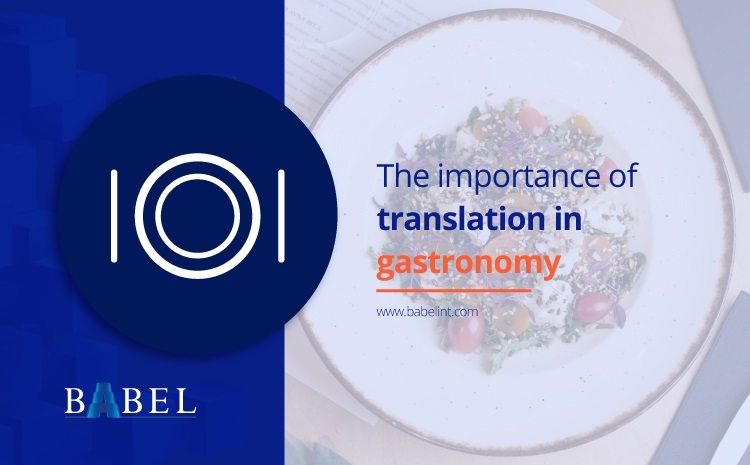
The importance of translation in gastronomy
Just click on the link below:
Headcheese, Welsh rabbit, rocky mountain oysters, clootie dumplings, bangers and mash, bubble & squeak … can these unique and strange names of dishes be translated? Food reflects a country’s culture, and a region’s traditional dishes not only represent the particularities of the place they also portray its language.
Translation services for the gastronomy sector therefore require a high degree of specialization, with translators who understand cultural variables as well as customer needs.
In this week’s blog we bring you 4 examples of texts from the gastronomic industry that require professional translation:
- Menus (your introduction to the world): yes, we have all seen those “memes” of menus that translate Sweetbreads as “Pan dulce” or Ladyfingers as “Dedos de mujer“. As unlikely and ridiculous as these mistakes may seem, not being familiar with the cultural variables of the target language for translation can lead to such aberrations.
For example, if you are translating fast food items for the US market, you need to know that a hoagie is basically a submarine sandwich. The same is true for ingredients: “zucchini” in the US is courgette in the UK, and what Americans call cilantro the Brits call coriander. In Australia, bell peppers are known as capsicum.
Even the humble pea can cause problems. Are we talking about garden peas, sweet peas, snap peas, sugar snap peas, snow peas, English peas or simply peas?
As for those beloved French fries, they are known as chips in the UK while chips in the USA are crisps in the UK. Yes, it can be confusing, and as playwright George Bernard Shaw once observed, the USA and the UK are “two nations separated by a common language.”
Gastronomic language is as rich and varied as the different types of herbs, spices and condiments used, so the professionals translating your menu need to be as knowledgeable about the ingredients as the chefs themselves if you want to avoid unsavory outcomes.
- Recipes (flavor formulation): a recipe for a dish is just as complex as a pharmaceutical formulation. Whether on an industrial scale or for a small signature cuisine restaurant, translations of your recipes need to be precise when it comes to quantities, characteristics, ingredients and procedures.
The slightest mistake in your translation can lead to odd flavors and may even lead to the loss of customers. As the British writer Anthony Burgess once said, “a well-balanced meal is like a poem to the development of life.”
- Your website (the face of your business): your gastro website is the medium for promoting your delicacies; it’s also where you store information on customers and prospects and where your menu is omnipresent. It is the digital center of your operation.
This means your website translation needs to be of the same flavor as your menu, your recipes and your brand. A professional translation will maintain the right tone in different media and avoid leaving a bad taste in your mouth.
- Your blog (the voice of your flavors): in the gastro industry, taste is every bit as important as prestige. Your blog is your brand’s voice, providing an informative and social medium that allows you to position yourself as a stellar participant in your market.
If you want your food and brand to expand beyond local confines and reach other parts of the world, the translation of your blog must retain the essence of your style, as this is the only way to maintain your brand’s voice. If the translation disaster witnessed on the Ministry of Tourism’s website (Sectur) in 2020 teaches us anything, it’s that a sloppy translation can trigger a worldwide brand crisis.
Just like the tourism industry, the gastronomy sector is a global, cultural and deeply loved market, so it is essential that companies promote it adequately using professional and multicultural translation services.
If you belong to the gastronomic or tourism industry and need a quality translation service, we have the secret ingredients that can really make the difference.